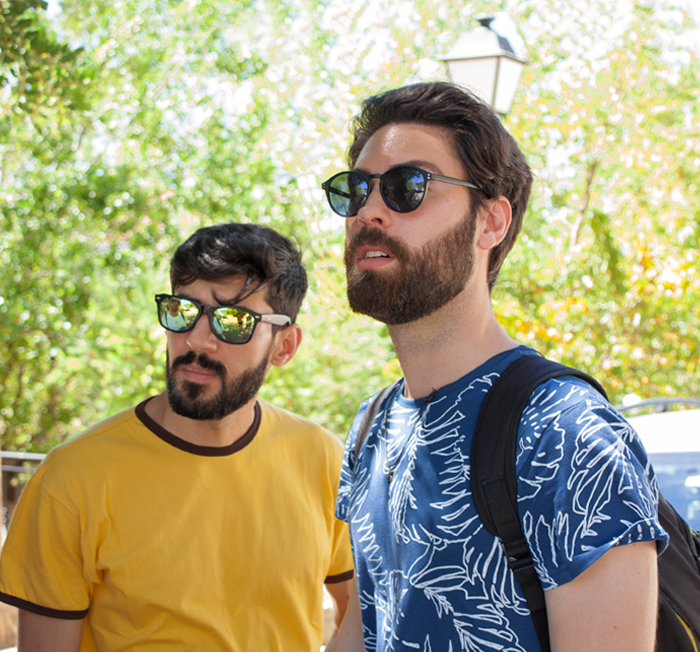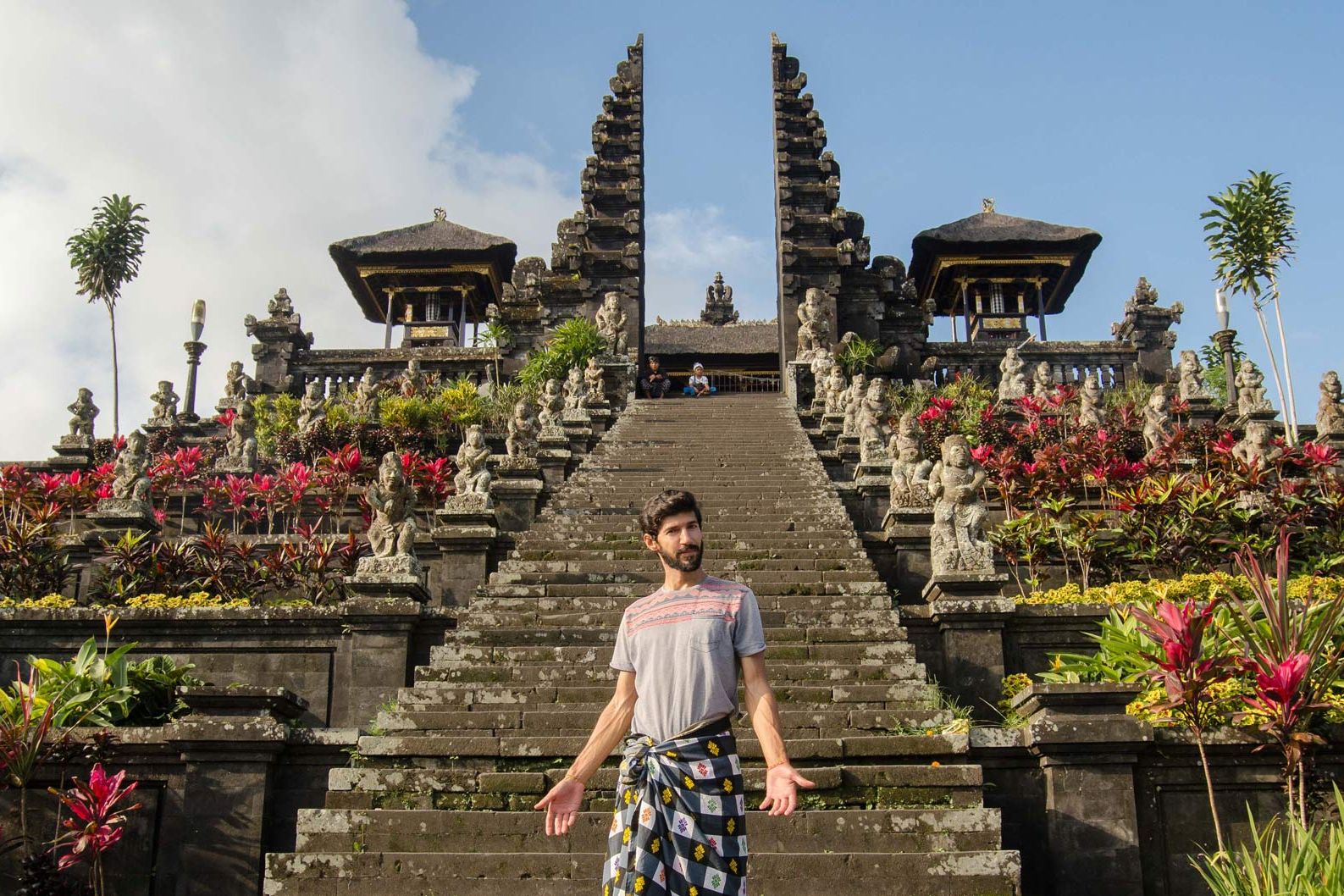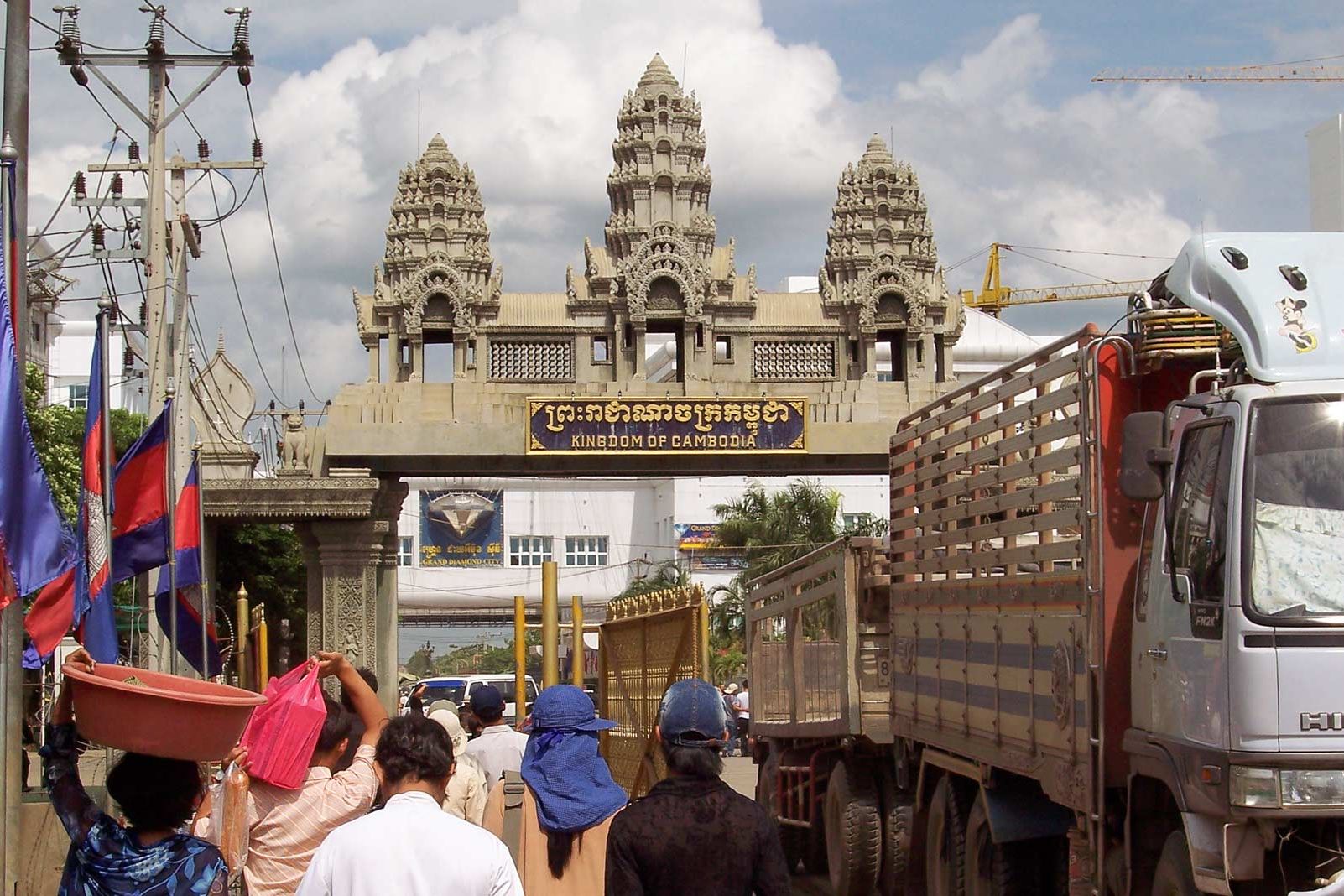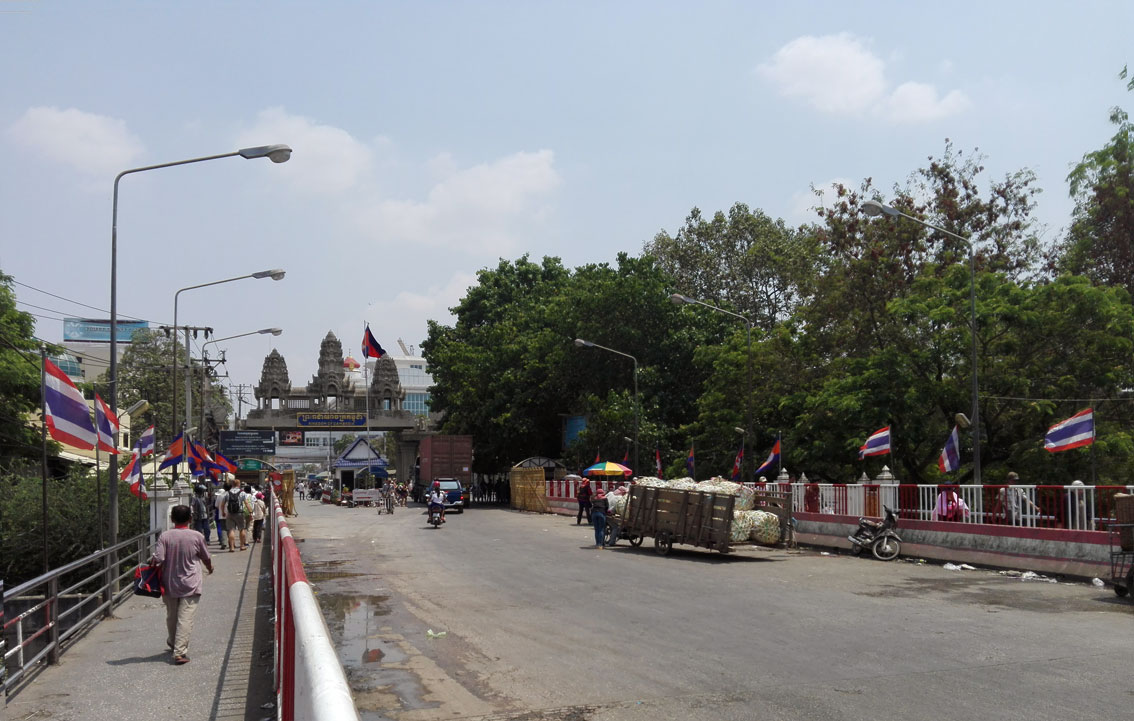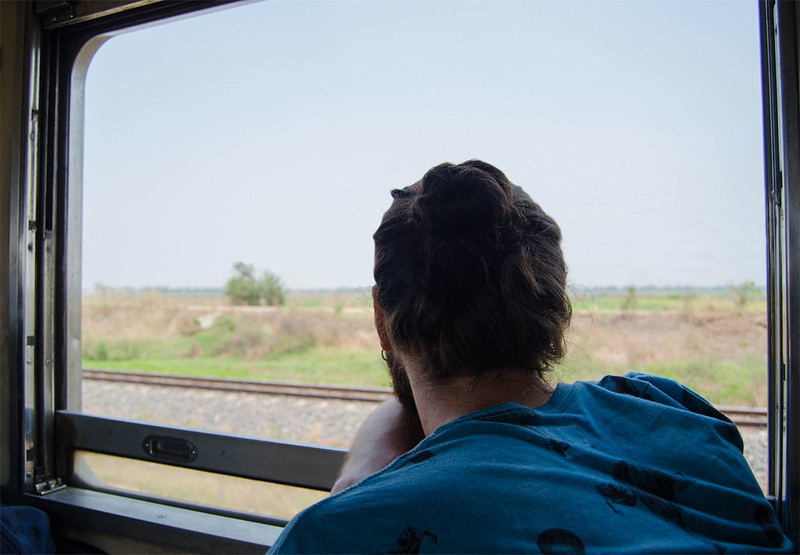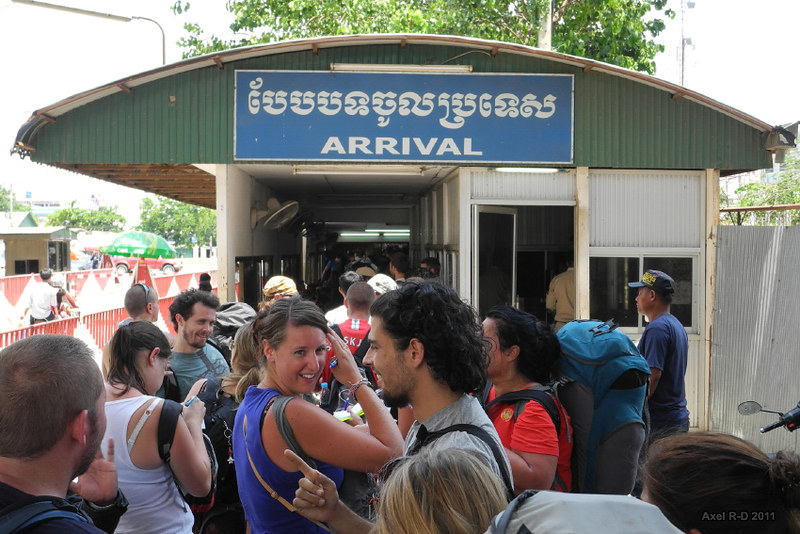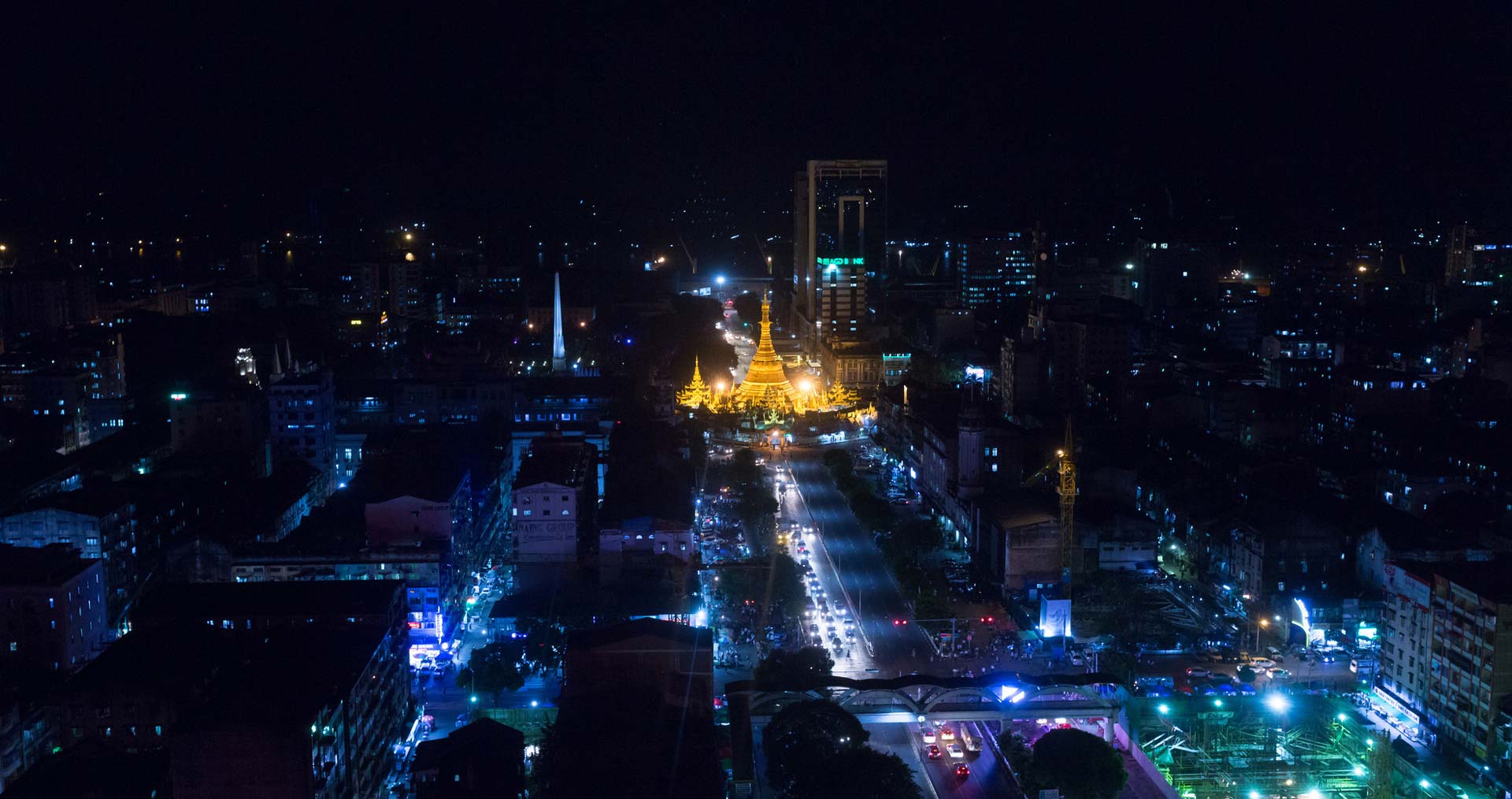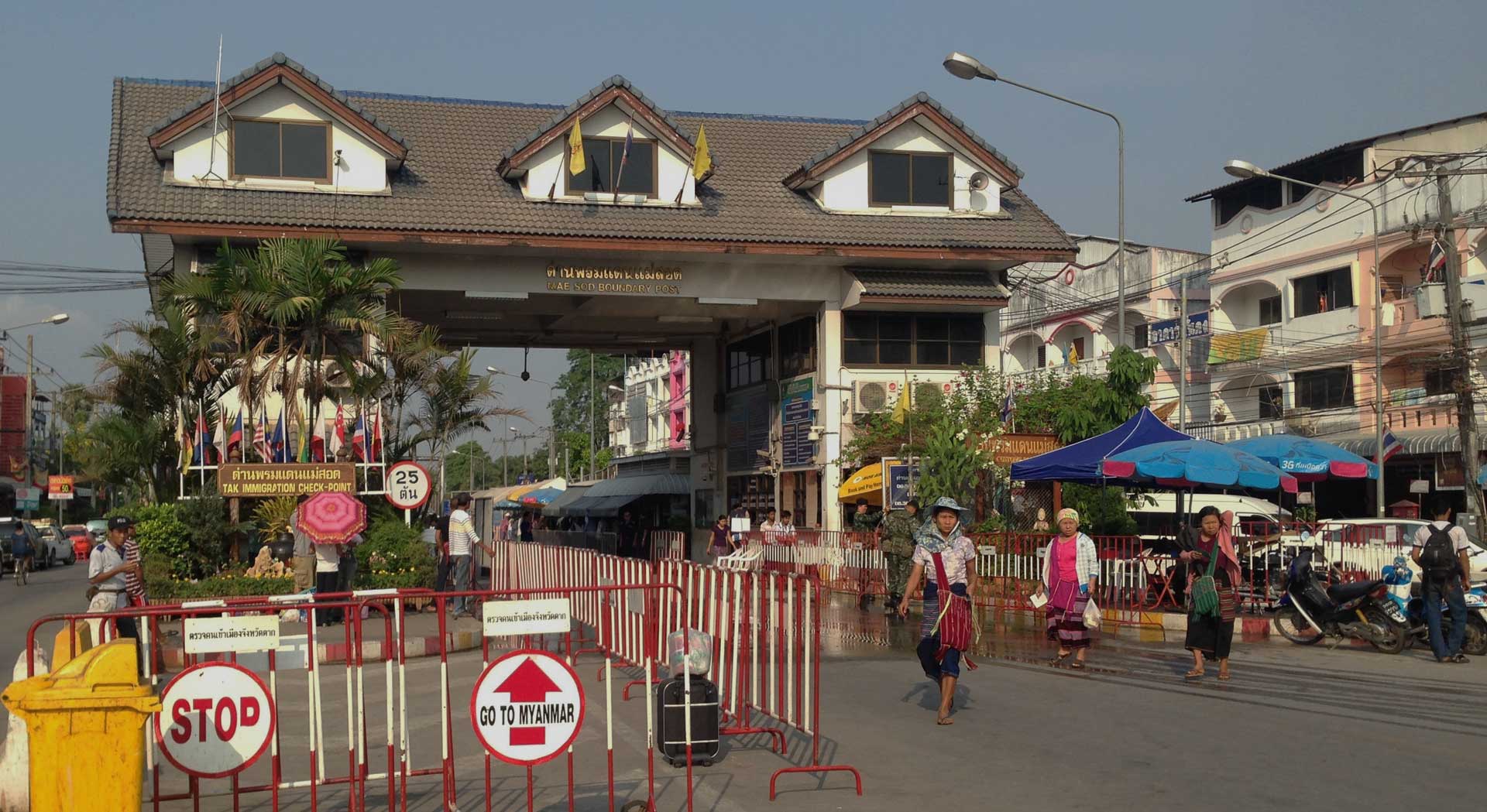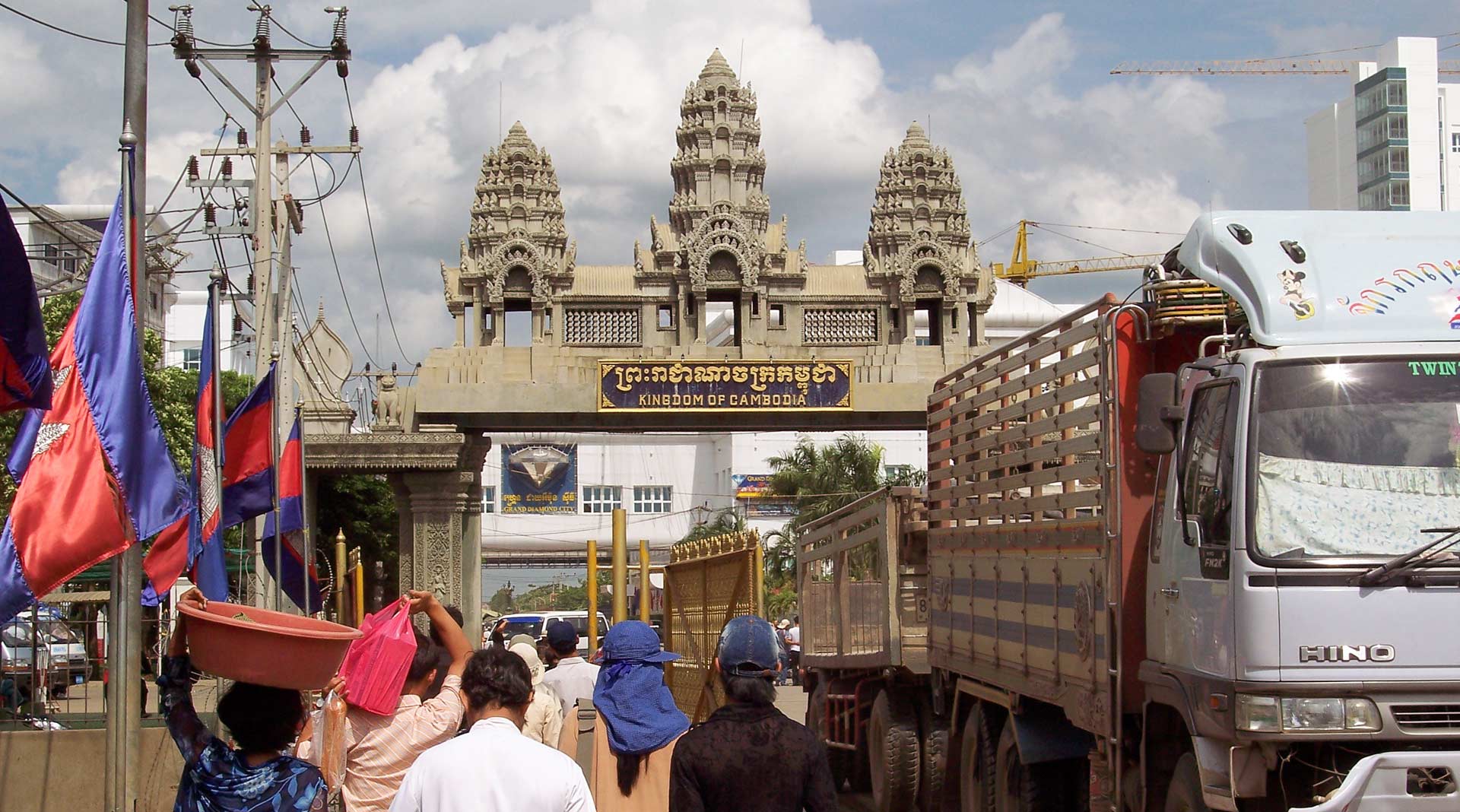Crossing Vietnam - Laos borders overland
Laos Visa on Arrival (2023 update)
According to feedback from some fellow travelers in 2023, it has not been possible to get a Visa on Arrival at the Laos border. We therefore advise you to apply for a Visa at the Lao embassy in Hanoi.
___________________________
Crossing a border by land is always a tedious affair. And yes, we know that airplanes can ease and shorten the entire process, but the money you save on plane tickets makes up for the time spent inside of a bus.
However, previous experiences like the one we had in Poipet, made the subsequent land border crossings stressful for us. And this time was no different.
Land borders Vietnam – Laos (on a Map)
If you want to know how to get from Vietnam to Laos overland, there are 6 different land border checkpoints (check the map below):
• Ngoc Hoi
• Lao Bao
• Cau Treo
• Nam Khan
• Nam Xoi
• Tay Trang.
But if you plan to cross the border by bus, most agencies only use the following 4:
• Lao Bao
• Tay Trang
• Nam Khan
• Cau Treo
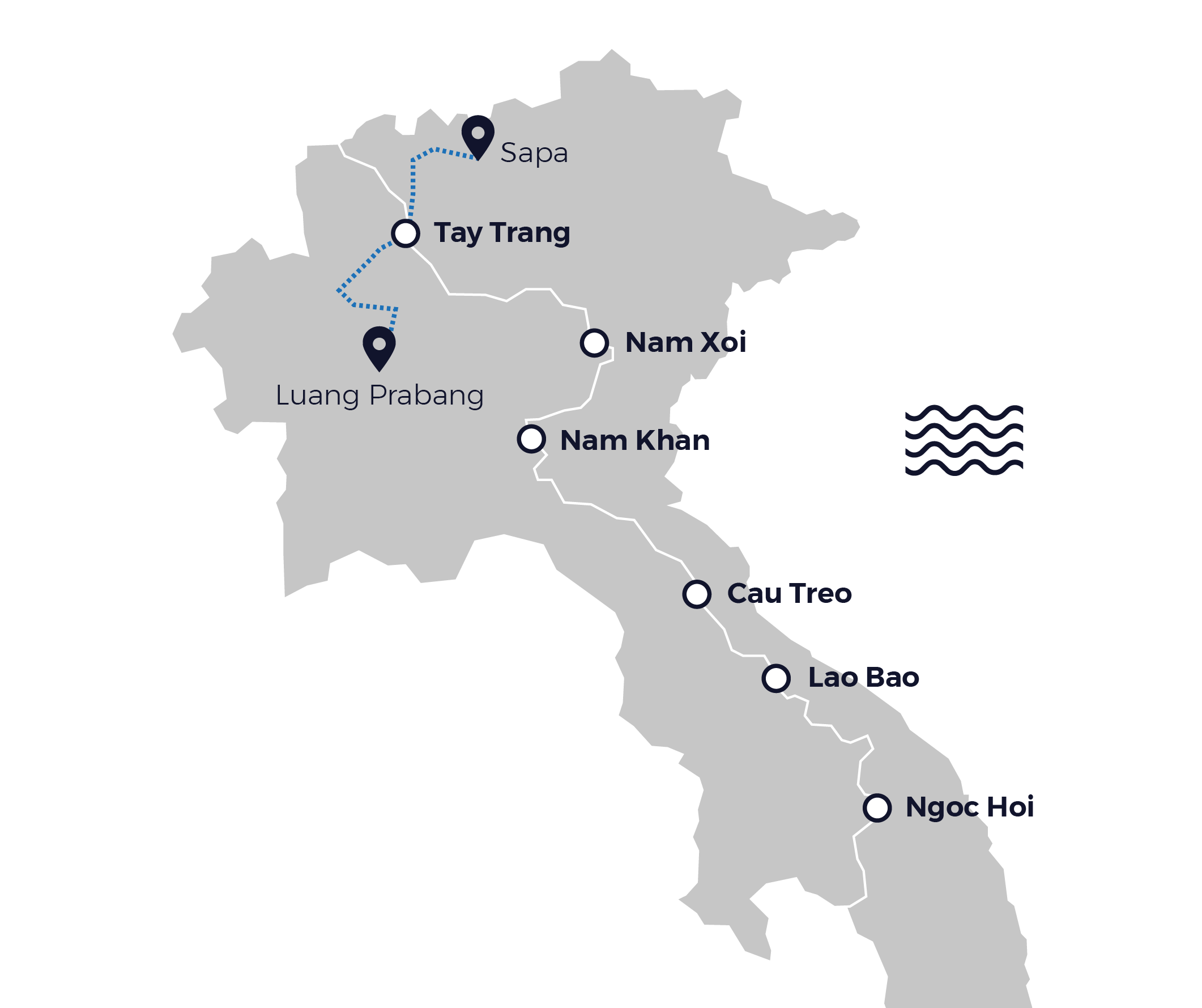
As we were in Sapa (Vietnam) heading to Luang Prabang (Laos), we crossed the Tay Trang border.
When we found out that the bus trip would take 18-hours to make, we decided to split it into two parts. First part: from Sapa to the Vietnamese border city of Dien Bien Phu where we would spend the night. The second part: from Dien Bien Phu to Luang Prabang, Laos.
Sapa to Dien Bien Phu
We bought our tickets for the morning bus to Dien Bien Phu at the bakery Baguette & Chocolat in Sapa for €11,40.
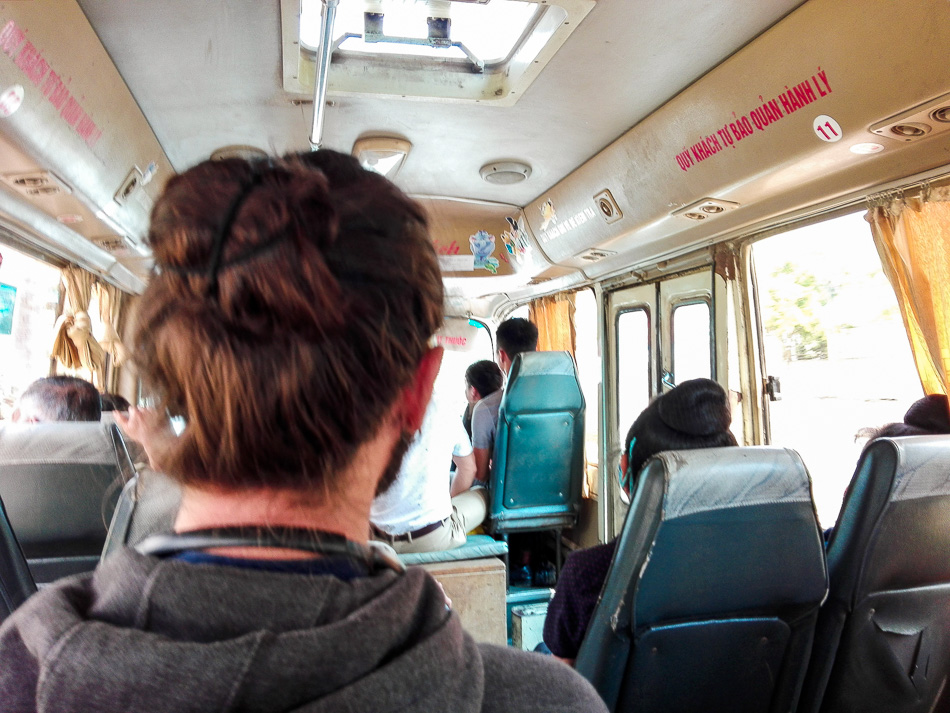
The 8-hour trip was rough. People kept opening the windows to vomit and to spit, so keeping down the banh mi we ate for breakfast was a struggle.
It was like watching this scene from Titanic for 8 hours.
We arrived at Dien Bien Phu bus station late in the afternoon and immediately bought tickets for the next day’s trip: €20,15 each. However, If you prefer to buy your ticket to Luang Prabang online, we recommend www.bookaway.com. Use the code “gravy5″ at checkout to get 5% off the ticket price.
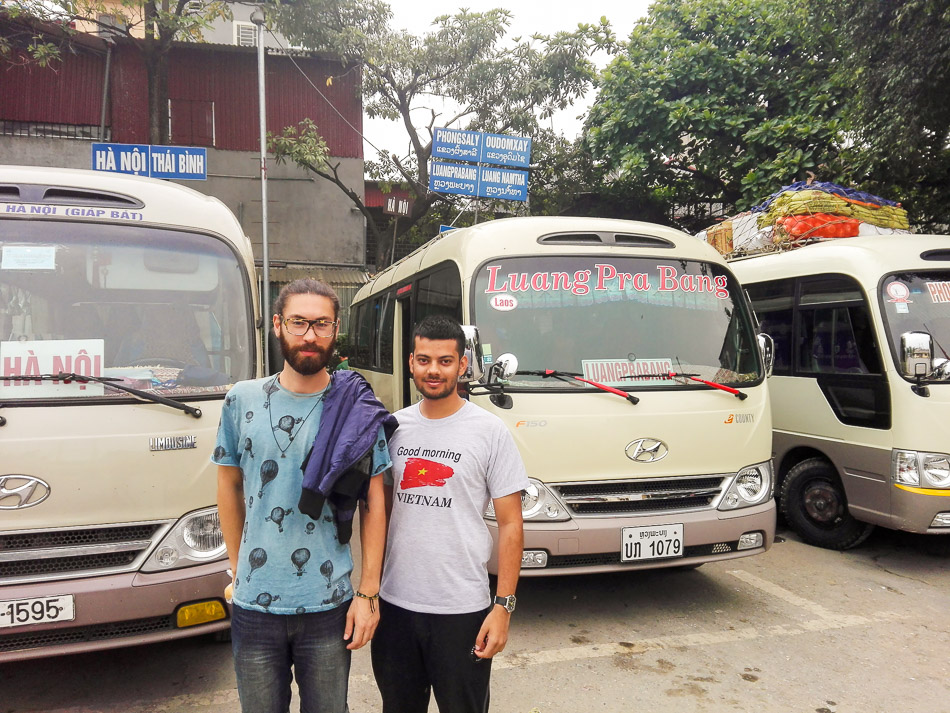
Mário and Avinash (a friend we met on the bus) at Dien Bien Phu bus station.
Border accommodation in Dien Bien Phu
We spent the night at the cheapest (and decent) hotel we found in the area: Huyen Anh Hotel.
Due to our level of exhaustion, we hardly explored the city. Just dragged ourselves through a few streets in search of a supermarket to buy provisions for the next day’s bus trip.
For dinner, we ate at the hotel restaurant. Great portions, really cheap, and surprisingly tasty!

The Vietnamese Border
At 7:30 a.m. on the next day, we set out for Laos in a mini-bus with no leg space. Two hours later we arrived at the Vietnamese border building, grabbed our backpacks, and headed inside.
The queue was long and barely moving as only one guard was doing the checks outs. A rumor spread that he was asking for “farewell donations” from tourists in front of the queue— fortunately, that didn’t happen to us.
The Laos Border
After an exit stamp on the passports and a short mini-bus ride in no one’s land, we reached the Laos border checkpoint.
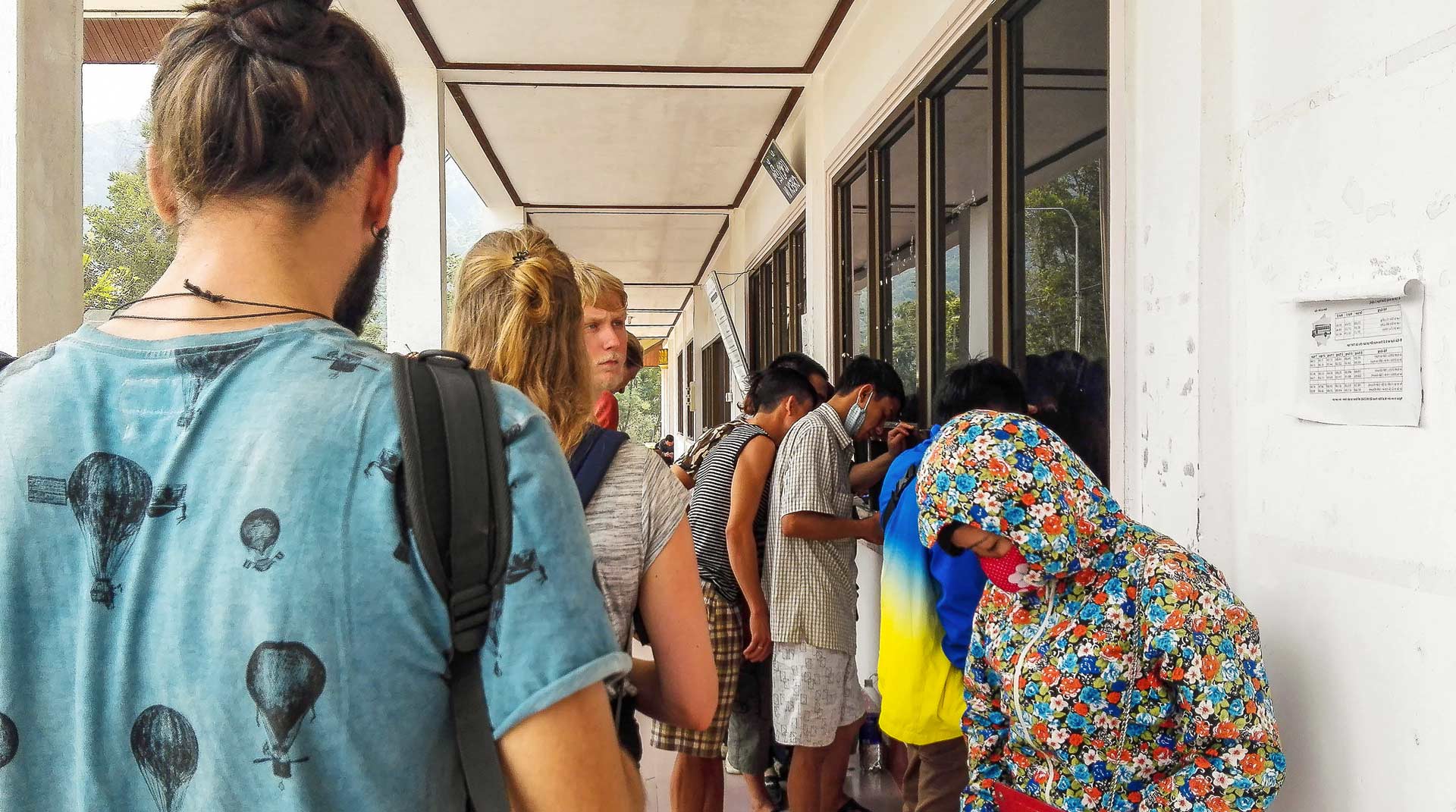
A guard behind the first window gave us some papers to fill with our personal info and the answers to questions like ‘Why are you visiting Laos?’ or ‘Where are you staying?’. Minutes later we handed him the completed papers, our passports, and the €32,5 for the visa fee.
From the fourth window, another guard called our names and asked us for a dollar.
– What for? We just paid for the visa back there.
– It’s a processing fee, sir.
Reluctantly, we paid. But as we reached for the passports, he told us to wait. Another guard called us from the 2nd window and we were asked to pay 2 more dollars.
– Why?…
– Because today is Saturday. It’s a weekend fee.
A group of Canadians also crossing the border were called from the third window, charged an additional made-up fee, and coerced to take new photos for their visas, as the ones they brought wouldn’t do — this service was 5 dollars.
Oh, there was also a fee for sanitary control and infections: a further $1.
Laos Visa on Arrival cost
Remember to check Laos document requirements regarding the entry of international tourists in advance. As far as we know, in Vietnam tourists from all nationalities can get a visa on arrival to Laos — provided they have a legal passport (duh!), a visa-size photo, and the money for the processing fees listed below (2023):
Affghanistan: $40
America: $35
Austria: $40
Bangladesh: $40
Belgium: $35
Canada: $42
China: $20
Denmark: $40
England: $35
Finland: $40
Greece: $40
India: $40
Italy: $40
Ireland: $40
Nepal: $40
Norway: $40
Nederlands: $40
Pakistan: $40
Portugal: $40
Sri Lanka: $40
Spain: $40
Switzerland: $40
Sweden: $40
Turkey: $35
Vietnam: $20
For more information on Visas on Arrival for Laos go to www.laos-guide-999.com/laos-visa-on-arrival
Keep in mind that the same doesn’t apply the other way round. To enter Vietnam from Laos, you’ll need a Visa in advance.
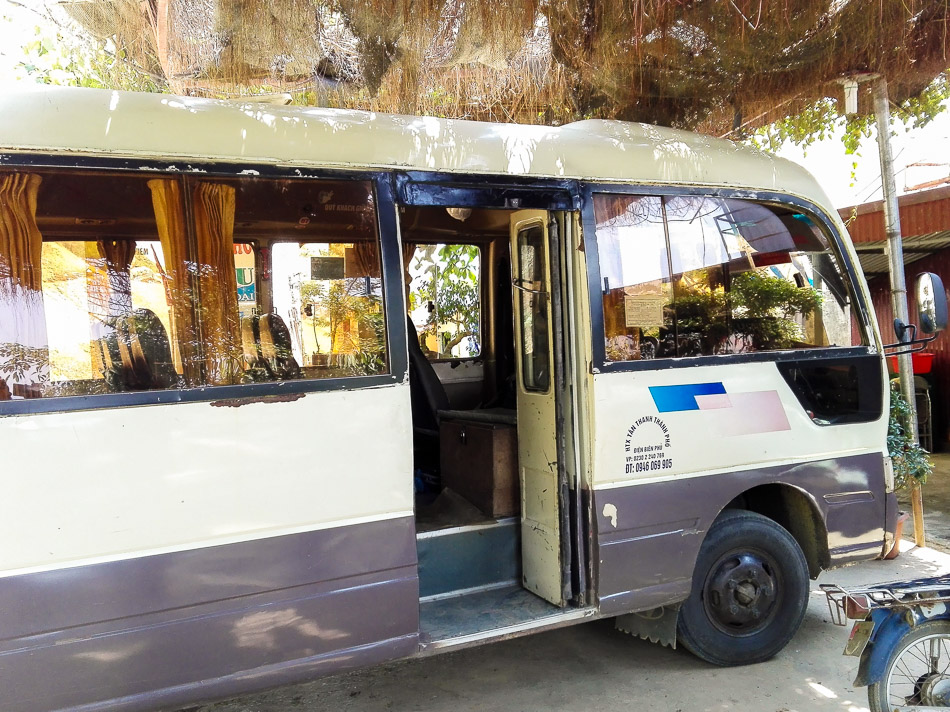
Border crossing expenses
Bus ticket Sapa >DienBienPhu: €11,40
Bus ticket DienBienPhu > Luang Prabang: €20,15
Accommodation at the Huyen Anh Hotel: €3.96
Laos Visa: €32,5
Extra fees: who knows. ¯\_(ツ)_/¯
To prepare yourself for the border crossings to come, read the post 9 Tips & tricks for a smooth border crossing. It’ll help!
If you have any questions or some extra info on the Vietnam-Laos borders, please leave it in the comments below.
Crossing the Infamous Poipet Border in Cambodia
Advice on Cambodia Visas
If you’re considering crossing the border by land from Thailand to Cambodia through Poipet, we recommend getting an E-visa beforehand at www.evisa.gov.kh.
The e-Visa costs 35USD (5USD more than the visa on arrival) but it’ll save you from the stress and the “processing fees” charged on the land border. Better yet, if you want to cross the border smoothly, do it by plane as there are no scams in Cambodian airports.
What happened to us when crossing the land border to Cambodia was quite stressful. The infamous Poipet lived up to its reputation.
We woke up after a really bad sleep in Bangkok, to catch the 5:50 AM train to the border town of Aranyaprathet for a 7 hour trip through the central plains of Thailand. It’s a really pleasant trip that costs 48THB.
(By the way, if you’re looking for transportation from Thailand to Cambodia check www.bookaway.com. They have plenty of options at great prices, plus, if you use the code “gravy5″ at checkout you’ll get 5% off your ticket price).
We started with a plan
It’s important to say that every plan or decision we make comes from what we’ve learned from travel books, blogs, the experiences of other travelers, and a little dash of intuition of our own. We do our homework pretty well. Studying and preparing ourselves with a good itinerary and a plan.
The plan for the day was to get off the train in Aranyaprathet, get a tuk-tuk to the Thai border for 80THB, get a stamp from Thailand to get out and a stamp from Cambodia to get in. Simple.
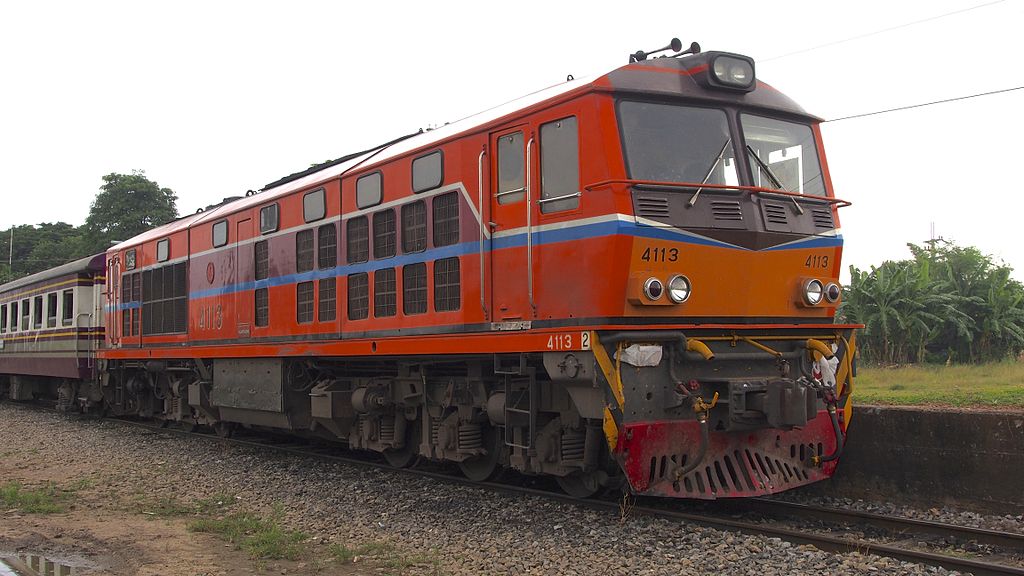
Clay Gilliland
The tuk-tuk cost us 200THB for a 10-minute ride. Fortunately, we ended up sharing the tuk-tuk with two American backpackers: Ryan and Winslow, that we had the pleasure to get to know along the ride.
At the Thai border (Aranyaprathet)
As soon as we got to the Thai border, we started walking to the building along with many other tourists and backpackers. There was a local market around, lots of tuk-tuk drivers and other random men. We immediately followed Winslow — the seasoned traveler from New York, coming to Cambodia for the second time.
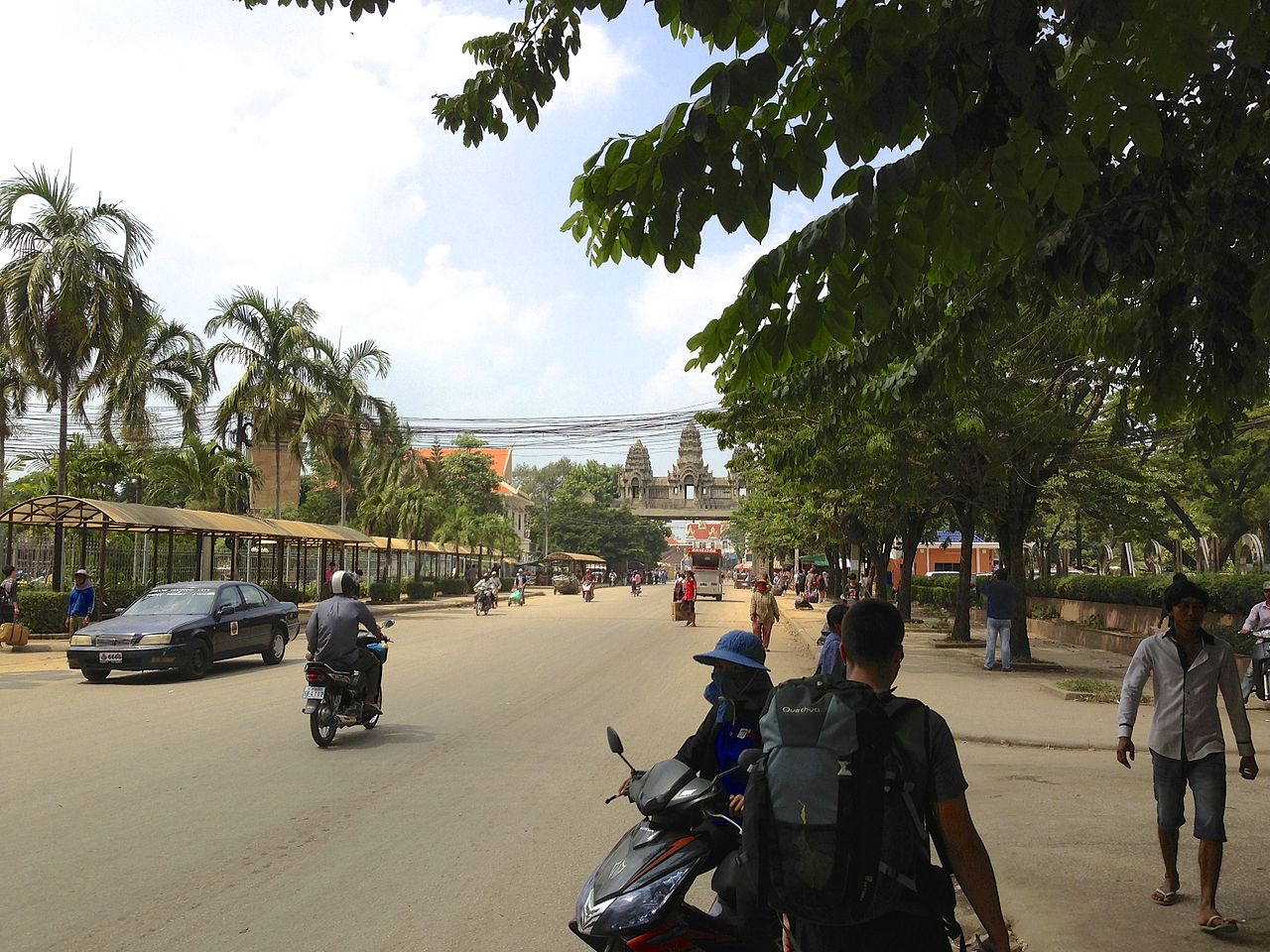
Clay Gilliland
Inside the building at the foreigners’ queue, we filled the departure card, handed over our passports, got a photo taken and our passports stamped. Super easy!
Went down some stairs and entered no man’s land and a bridge over stagnated water. At the end of the bridge, some dodgy men in hats were allegedly selling illegal visas, but none of them approached us. We just kept walking to the right end of the bridge into the Cambodian border offices.
The welcoming party at the Cambodian Border (Poipet)
As soon as we got in, a government official gave us a form to fill in.
We filled the form and prepared a photo, our passports, and the 35USD each (just as it said in every textbook, travel site, and in the big sign above the office counter). As we tried to hand them to the border officials behind the counter, they refused to take them, pointing to a handwritten sheet of paper that said “35USD + 100THB”.
So there we were in front of border corrupt government officials, trying to extort some extra money from tourists crossing the border. Just exactly as every textbook, travel site, and Winslow warned us. Great…
A little intimidated Nuno and I (plus all the riled-up backpackers in the queue) refused to pay the processing fees, which only made the officials speak louder in Khmer and point extra hard to the “100THB” in the paper.
The waiting game
Seeing that we weren’t going to give in, they took us aside, made us sit on some plastic chairs, and ignored us.
By then everyone is annoyed, anxious, and tired from the long train ride. After what felt like forever, a cranky officer came and took our passports and forms.
20 minutes later he came back, yelling our names and handing out our passports and visas. We got out of there as fast as we could.
Still trying to process what had happened, another officer took us to another long queue. This was the queue to get our visas stamped. Now, unfortunately, there was a power outage and no power means no processing tourist visas. So we had to wait. Under a boiling metal roof.
After 20 minutes, the power finally came on. Once again, we gave our passports to the officer, he took a webcam photo, moaned something, stamped the passports and we got in.
Siem Reap off!
After this whole border mess, we just wanted to get to the next bus to Siem Reap.
From what we’ve read, the bus station was nearby and the bus would prevent us to get ripped off by taxi drivers that wait for tourists at the Poipet border roundabout.
Ryan, the backpacker we met at Aranyaprathet asked Winslow, Nuno, and I to share a taxi. Our minds were still fuzzy from the heat and the border stuff, so we said yes!
We just wanted to calm down, and rest.
The taxi ride was 2h30 and cost us 48USD. Quite expensive considering it was not a taxi at all. Just a dude in a car, moving people from here to there in his spare time.
At least he had air-con and promised to leave us at our hostels.
Arriving at Seam Reap, the driver turned in a random street, pulled over, and told us to get out. We had no idea where we were, and outside the car, a group of Cambodian men were already taking our backpacks from the trunk. Something wasn’t right. And it the second time that day we felt like shitting our pants.
Winslow was the first to get out of the car and started yelling at the driver. Things got pretty heated and the Cambodian men started surrounding Winslow and us.
Basically, it was all a scam:
The fake taxi driver overcharges tourists at the border and dumps them in that corner of Siem Reap where other tuk-tuk drivers await. The tuk-tuk drivers will then take the tourists to their hotels – for more money obviously – and ideally get booked to show them the Angkor temples for the next days.
Winslow refused to pay the taxy driver and refused to go on any tuk-tuk, screaming and threatening to call the police. By now the tuk-tuk drivers were also yelling, laughing, and making fun of him, which only made things worst.
What the f*ck have we got ourselves into?
Shit was about to go down when the taxi driver, backed down from the argument and said he’d take us to our hostels. As soon as we saw the famous Pub Street, we got off the car and figured the rest out.
Not a good first impression of Cambodia.
It was quite a rough day but hey, it’s all gravy!
Entering Myanmar (Land borders, Airports, and Limitations)
Now that you know what needs to be done to get your visa, let’s talk about the most common ways to enter Myanmar.
Getting into Myanmar by land
Currently, travelers are only allowed to walk into Myanmar through Thailand as the land borders with Bangladesh, Laos, and China are closed to foreigners. If you’re coming from India (Moreh, Manipur State) you must acquire a permit which is obtained separately from your visa.
Read Myanmar Visas for Foreigners where we’ve gathered all the info on Visas so that your trip can get off on the right foot. We covered all the bases: from the application process to required documents and costs.
Crossing Thailand – Myanmar land borders
If you’ve applied for a Myanmar e-Visa and intend to cross the Thailand-Myanmar border,
you can only do it through the following land ports:
• Mae Sai / Tachileik
• Mae Sot / Myawaddy
• Ranong / Kawthaung
Getting into Myanmar by Airplane
In case you’re coming from overseas, Myanmar has 3 airports receiving international flights:
• Yangon International Airport (aka Yangon Mingaladon Airport)
• Mandalay International Airport
• Nay Pyi Taw International Airport.
As many airlines fly to Myanmar from Bangkok, you are likely to make your layover there. And you may have to change airports (from Suvarnabhumi International Airport to Don Mueang) if your next flight is on a low-cost airline. If so, there are free shuttle buses linking the two airports.
For more info and timetables on the Free, Shuttle Bus service go to www.thaizer.com/free-airport-shuttle-bus.
Standard airlines such as ThaiSmile, Bangkok Airways, and Myanmar Airways International always depart from Bangkok Suvarnabhumi International Airport.
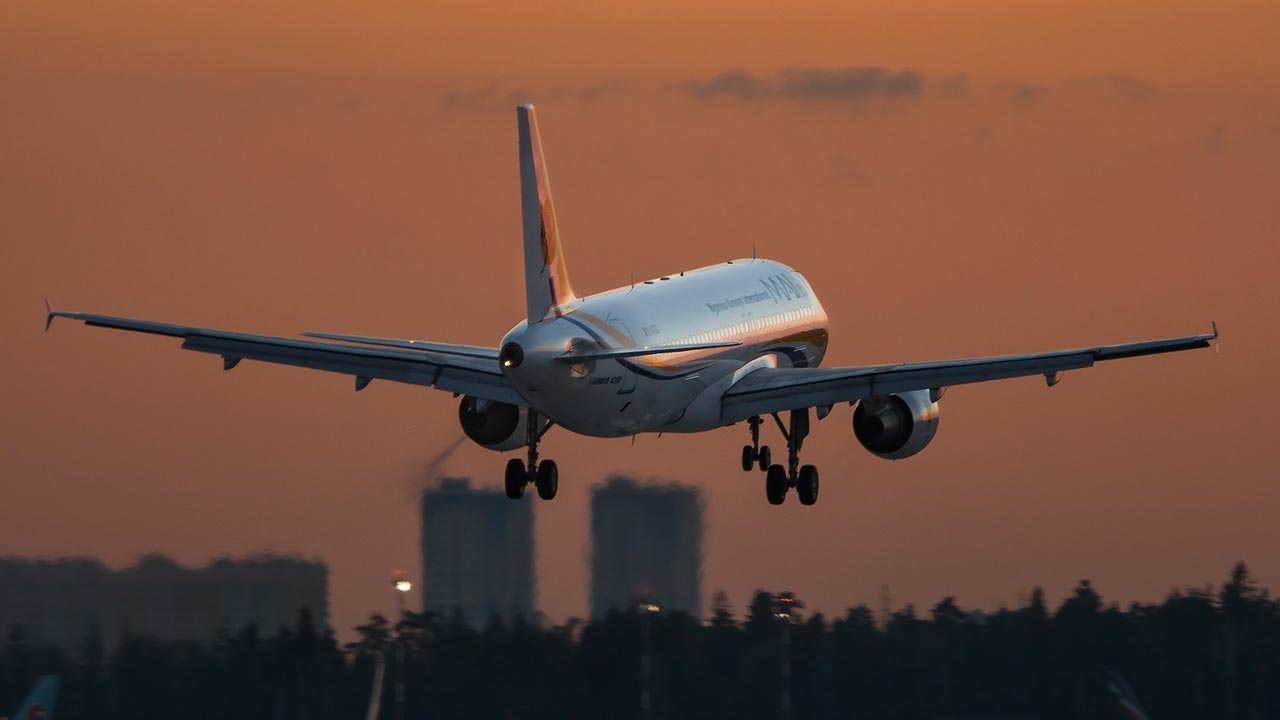
Photo by Papa Dos.
Flying from Bangkok to Yangon
Low-cost flights from Bangkok (Don Mueang Airport) to Yangon take about 1h20 and cost between €100 and €150 — depending on the time of year.
The low-cost airlines with the most frequent flights are:
• NokAir
• Air Asia*
*Tip: install and check the Air Asia app for deals that can’t be found on the website. You can save up to 20% off.
The standard airlines flying frequently to Yangon are:
• Myanmar National Airlines
• Myanmar Airways International (daily flights)
• Bangkok Airways
• Thai Airways International
Transport from Yangon International Airport to the city
As the airport is a 30-minute drive from Yangon, the easiest way to get to the city is by taking a taxi which shouldn’t cost more than 8000 MMK (€ 4.90).
However, buses can save you money if you’re traveling alone or can’t find other travelers to split the taxi fare with. To find the buses, exit the arrival Terminal and cross the parking space. A bus ride to Yangon cost 500 MMK (€0,30).
Flying from Bangkok to Mandalay
Low-cost flights from Bangkok (Don Mueang) will take 2 hours to reach Mandalay.
Transport from Mandalay Airport to the city
Mandalay Internation Airport is a 1-hour taxi ride from Mandalay city center. Fares on taxis with AC cost up to 15000 MMK (€ 9,15), but if you can handle the heat, taxis with no AC are a bit cheaper.
Besides taxis, we’re not aware of any other transportation to the city.
Getting around Myanmar (Domestic Flights)
Myanmar National Airlines have many domestic flights — that even locals try to avoid due to a bad reputation. Flights range from € 50 up to € 250, depending on the destination and time of year. In April during the Thingyan Water Festival, flights sell out super fast.
The most common domestic flights are:
• Yangon > Bagan (Nyaung-U)
• Yangon > Mandalay
• Yangon > NayPyiTaw.
Domestic flights are infamous for leaving earlier than the scheduled time. Also, have in mind that while flying can save you time, you’ll spend a lot more money than traveling by land. If you want to book one of the options mentioned above, check out www.bookaway.com (to get 5% off the price use the code “gravy5″ at checkout).
Cover photo by Hai Yang.
Myanmar Visa for Foreign Travelers (what to know before you go)
You may already know that foreign travelers are required to have a Visa before entering Myanmar. Meaning that, unless you’re from one of the neighboring ASEAN nations, there’s no Visa on arrival for you.
As the Myanmar visa application takes some time, paperwork, and organizing beforehand, we’ve gathered all the relevant (and updated) information so that your trip can get off on the right foot.
Myanmar Visa Application Options
e-Visa
You can apply for a Regular e-Visa or an Express Tourist e-Visa at evisa.gov.mm. With the Express e-Visa, you can have the application process completed in 24 hours. But considering the number of complaints and that it is a recent service, we recommend doing it at least 3 days in advance. Just in case.
What you’ll need to apply for a Myanmar e-Visa
• Passport valid for 6 months
• A recent digital personal photo (48mmx38mm).
• Regular e-Visa cost (3 days): 50 USD
• Express e-Visa cost (24 hours): 56 USD
You can pay with MasterCard, American Express, Visa, or JCB.
Have in mind that not all passport holders are eligible for applying for an e-Visa. You must be from one of the 100 countries that have an agreement with Myanmar. Know more here: evisa.mm/NoticetoTourists (jump over to paragraphs 10 and 11).
e-Visa validity and permitted length of stay
After applying, you’ll be sent the e-Visa approval letter to your email inbox. The letter is valid for 90 days from the issued date, and if it expires, your entry into the country will be denied.
By the time you cross the border, you must carry a printed version of the letter to present to the border officials and get your passport stamped.
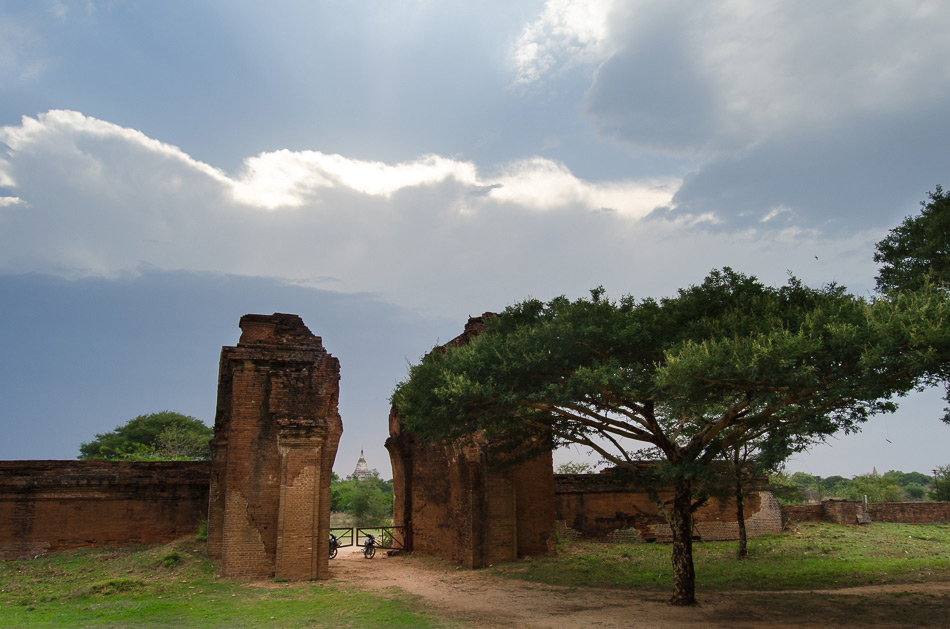
After entering Myanmar you’ll have 29 days to visit the country, and you won’t be able to leave and re-enter without acquiring a new Visa. Nevertheless, your stay can be extended for another 14 days, paying a 3 USD per day fee to the immigration officers at the border (plus an extra fee of 5 USD if you’re leaving through an airport).
There’s a slight problem with overstaying though. Some hotels may deny service to overstayers (as they would be in for a hefty fine should they be caught for allowing that).
e-Visa Entry Permissions
e-Visas will limit how you can enter the country. Currently, passengers with e-Visa are only permitted to enter via following ports:
✈️ Through airplane
• Yangon International Airport
• Mandalay International Airport
• Nay Pyi Taw International Airport
🚌 By land
• Tachileik Land Border Checkpoint
• Myawaddy Land Border Checkpoint
• Kawthaung Land Border Checkpoint
• Tamu Land Border Checkpoint
• Rih Khaw Dar Land Border Checkpoint
If you’re looking for transportation to Myanmar check out www.bookaway.com (to get 5% off the ticket price use the code “gravy5″ at checkout).
Paper Visa
In case you’re already traveling in a neighboring country, you can go over to the nearest Myanmar embassy or consulate. Here’s a list of all the Myanmar embassies abroad: www.embassypages.com/myanmar
Each of the embassies on the list has their own hours to handle Visas. Also, application processes can take from 1 day all the way up to 2 weeks.
Required documents (can change according to your location)
• Passport valid for 6 months
• 2 personal photos (35mmx45mm). The photos should be recent.
• A colored photocopy of your passport
• Proof of the bus or plane ticket into Myanmar
• Proof of a hotel booking*
The cost can vary according to the embassy you’re applying to — to be paid in cash only.
We made our application at the Myanmar consulate in Chiang Mai and paid 1600 THB (49 USD) to have the visas ready in 3 business days. If you wish to have it processed on the same day, you’ll have to pay 2400 THB (74 USD).
Working hours are a bit odd there: 9:30 AM to 11:30 AM.
* The application form asked us to write down the address of the hotel we would be staying in Myanmar. Not having a reservation yet, we wrote down the city and a hotel name that we managed to memorize from a Google search days before. We were not asked for other evidence.

Is a pre-booked outbound flight necessary to enter Myanmar?
Some travel books allege that to enter Myanmar foreigners must have proof of a pre-booked flight leaving the country. On the other hand, many bloggers say they don’t.
The truth is that neither at the moment of our visa application nor at the moment of crossing the border we were asked for that. Apparently, the myth exists due to border regulations providing that possibility — even though it rarely happens.
So in the spirit of reducing the likelihood of that happening check out the article: 9 tips and tricks for a smooth border crossing.
Vaccination requirements for entering Myanmar
The vaccine is mandatory if you’re arriving from a country with a risk of yellow fever. Check the updated list to see if you’re required to get it: countries with risk of Yellow Fever.
If you have any questions regarding Myanmar visas, use the comments below. We might be able to answer.
Cover photo by James Antrobus.
9 tips & tricks for a smooth border crossing
Crossing a border by land is hands-down a tedious moment for everyone. Backpackers do it solely for the love of the game, and as a means to cut expenses of a tight budget. When it comes down to the more money I get to save, the more traveling I get to do, we just gotta suck it up and do it.
But after several unfortunate occurrences (like this one, and this one), border crossing also became synonymous of anxiety and sweaty palms. In all conscience, being on the other side of the world dealing with corrupt armed men planning to steal your money, would make you feel quite apprehensive as well.
On the other hand, you can see land border crossing as the rite-of-passage that turns a common tourist into the intrepid backpacker all of us strive to be.
All jokes aside, corruption from police and border officials underlines a real social problem that we’ll explain in a minute. But first, here are the top tips (in no particular order) for crossing a border by land:
1. Appearance
I’m all up for comfortable clothes, but entering a new country is an occasion that asks for something with sleeves, so dress appropriately. Let’s just say that the goal is: to not give the officials a reason to ask for a proof of adequate funds.
2. Lie on your resume
On the subject of “adequate funds”, it may be convenient to have a job – so lie if you have to. Naturally, most countries prefer welcoming tourists on vacation than unemployed backpackers who’ll try to find illegal work on a tourist visa.
At the borders, some occupations are more taboo than others, so diving instructor, musician or bartender should be replaced by engineer, dentist or accountant. Young looking travelers can dodge the question altogether by saying they’re students.
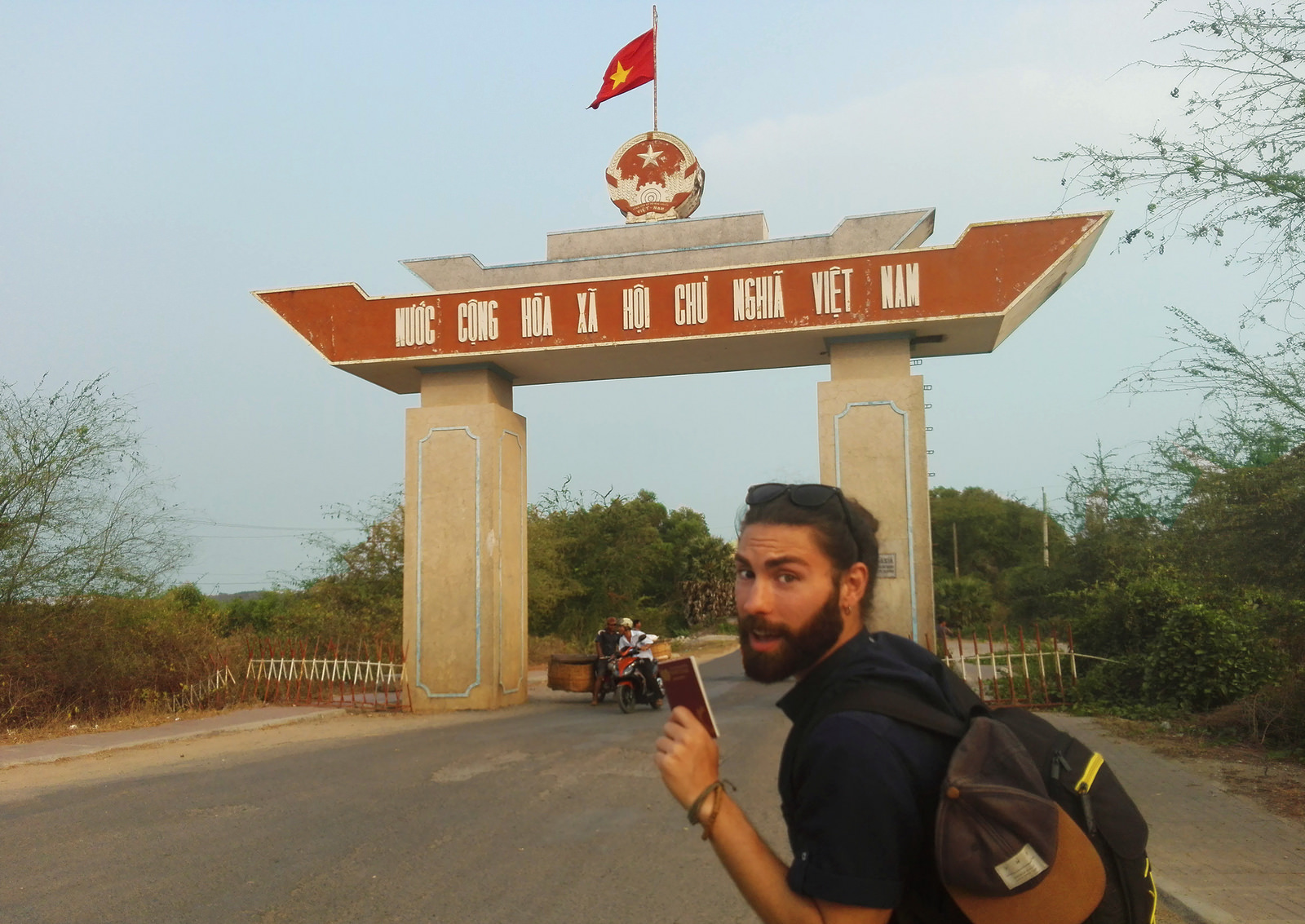
If an officer asks why you’re visiting, allegate that you’re on holiday and avoid any excuse to be tangled up in further bureaucracy.
3. Exact cash and crisp bills
Even though Lonely Planet includes scams as a common border crossing expense, don’t give in just yet! Check up on the visa costs beforehand and carry the exact amount in the appropriate currency (usually US dollars or the country’s currency).
As a preventative measure, hide some emergency cash in case you bump into a more “assertive” guard. Also, don’t expect them to accept your crinkly-old-faded bills!
Tip: You’ll find plenty of money exchange services in the periphery—some more legitimate than others—avoid them, the rates are always unfavorable.
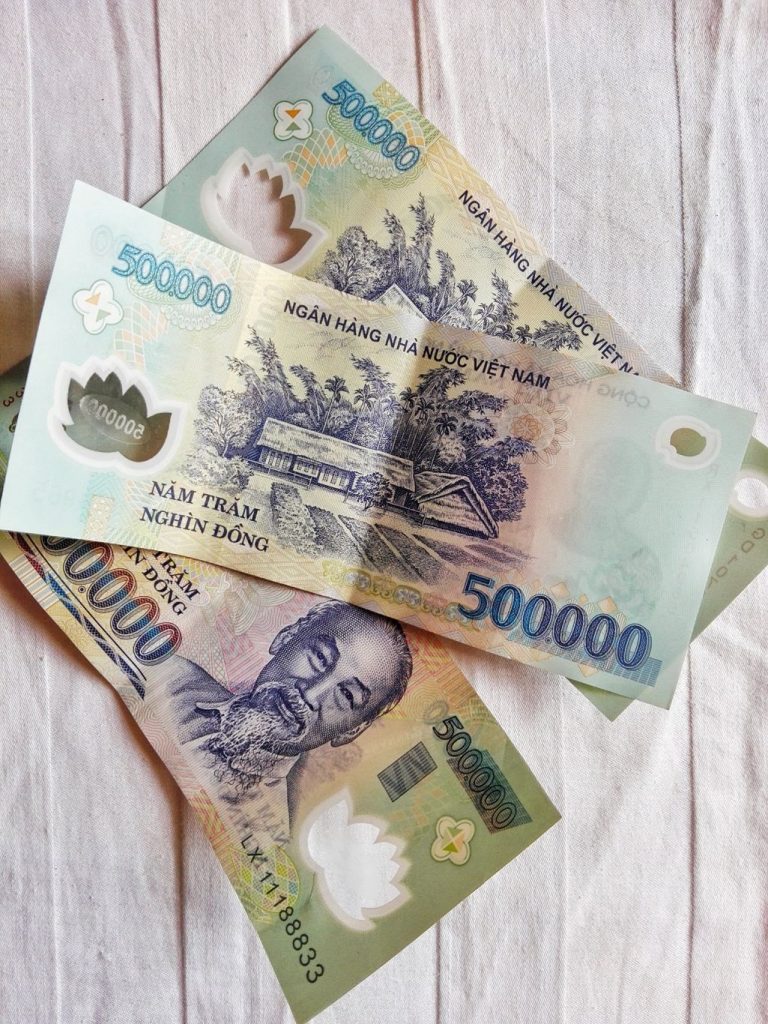
4. Research the border crossing checkpoint
Do a fast Google search on the land border you’re about to cross and become acquainted with what you might expect, such as location and visa procedures (not all checkpoints provide visas on arrival to foreigners). Maps.me and travel blogs can help you with that.
Some border checkpoints are more isolated or sketchy than others, that’s why being prepared, walking in confidently and understanding the country’s processes can make the experience run smoother.
5. Transportation to and from the border
Bus companies in Southeast Asia will arrange and assist you in the whole border crossing process front point A to point B. However, this is not the norm around the globe.
Border forms and officials will ask for your destination inside the country, so have an answer ready.
Tip: there will be plenty of transport options at customs (tuk-tuk, taxi, shuttle buses), but negotiating transportation from the border will always be more expensive.
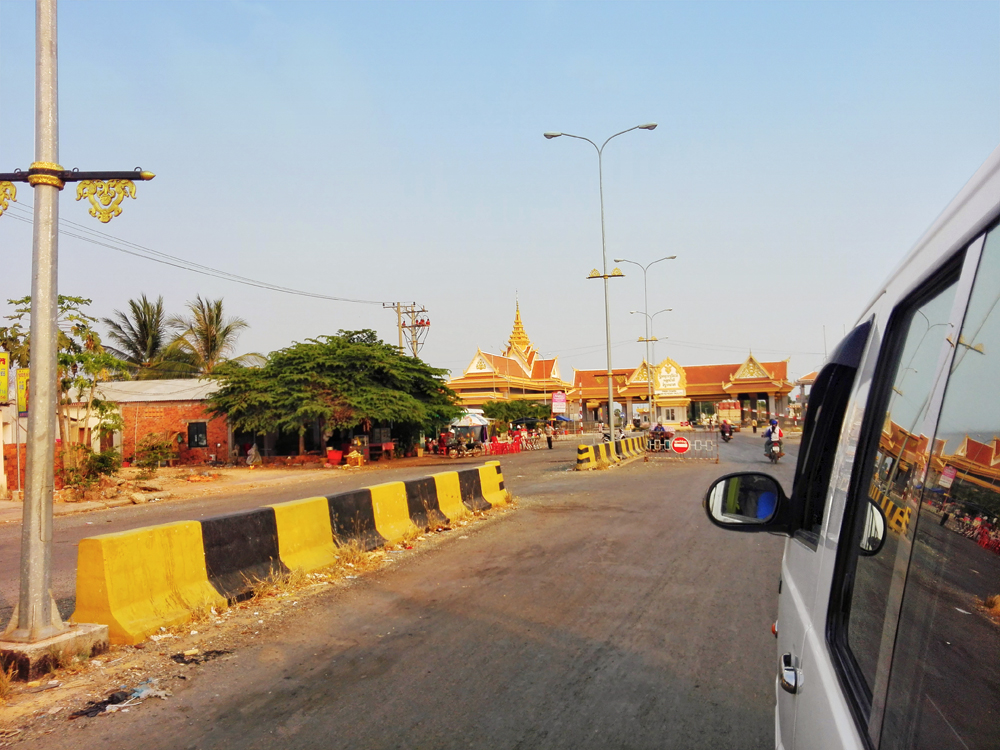
6. Updated Visa information
Double-check in advance the exact visa requirements to your nationality—you might need to apply for the visa and it takes time.
Have in mind that foreigner policies keep changing, and is up to us to keep informed. As an example: in Thai land borders, as from 2017, tourist visa renewals are limited to twice per calendar year— despite airport borders not being affected by this measure.
Tips: your passport should be valid for at least six months.
If you’re going to be traveling through several countries, you need to be informed about where the embassies are.
Carry up-to-date vaccination booklets.
7. How long are you staying for
Trust us, always ask for the maximum limit of time in the country—you might regret if you don’t. If a country exceeds your expectations, or in case of an emergency (like ignoring point 6) you’ll be able to stay for a while longer.
8. Staying safe
If you’re on a bus ride to the border, make some acquaintances so you won’t have to cross it alone. Try to join other fellow travelers during the crossing.
Keep an eye on your belongings, be cooperative and civil to the officers as many of them have useful safety advice to share.
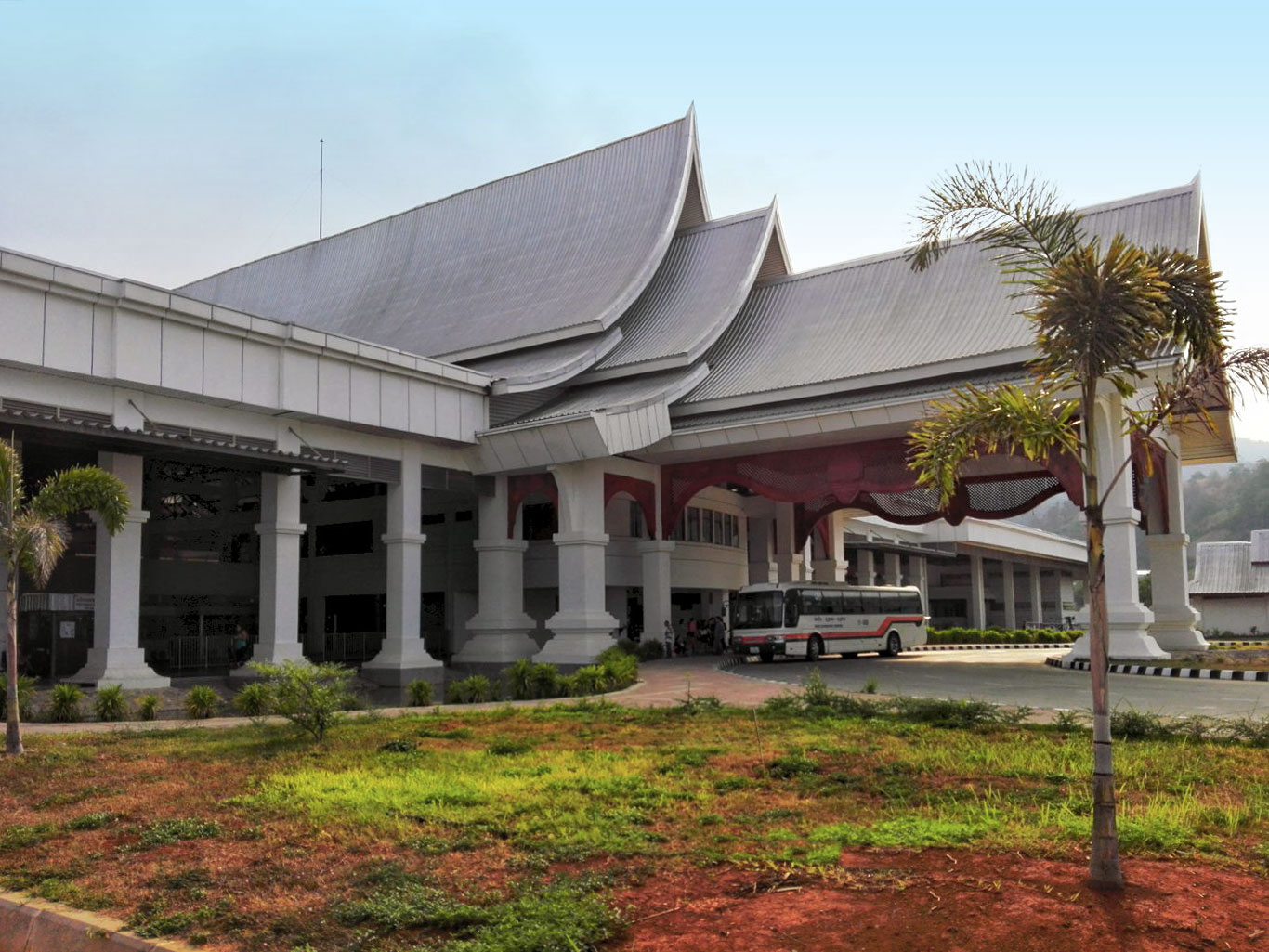
9. Just beat it
Get away from the border as quickly as possible. Get back your stamped passport, thank the officials, and leave quietly before they regret letting you in. Bye Felicia!
Tip: take a picture of your visa and save it on your phone. In case of something happening to your passport, you’ll have somewhat of a proof of your legal entrance in the country.
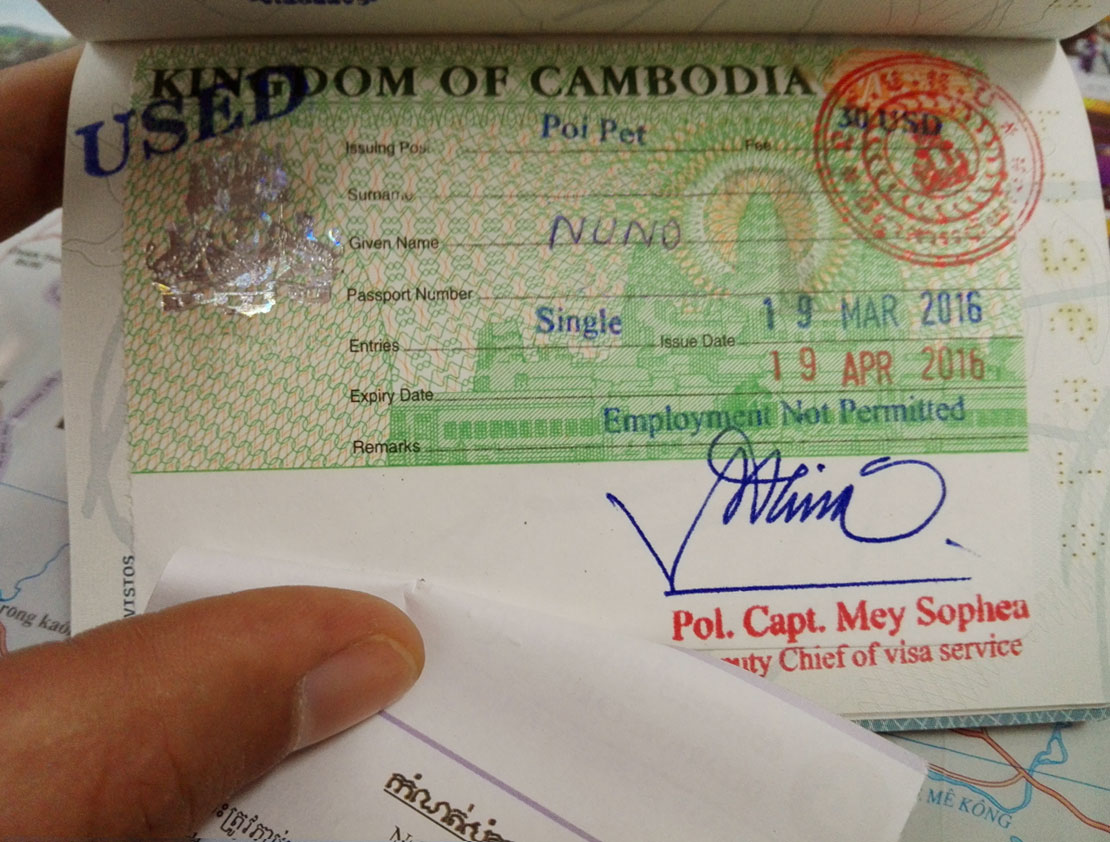
The cause of border corruption
Most of us are unaware of the personal and professional circumstances surrounding police officers and border guards in many Southeast Asian countries. Did you know that they have to buy their position for sums of money that can reach up to $25.000?
And every time they apply for a new position, they’ll have to pay the fee associated with it.
To put that insane amount of money together, officials have to borrow it from their families and friends, to which they’ll have to pay back. And it gets worse when you consider the economic reality of countries like Cambodia, where a big part of the population lives on merely $2 a day.
Although nothing justifies the scamming and the stealing, it may help us understand the context in which they operate and their conduct as a way to comply with a rotten system.
If you have extra tips or similar experiences share them in the comments below. Thanks!
Cover image by Rikker Dockum.



